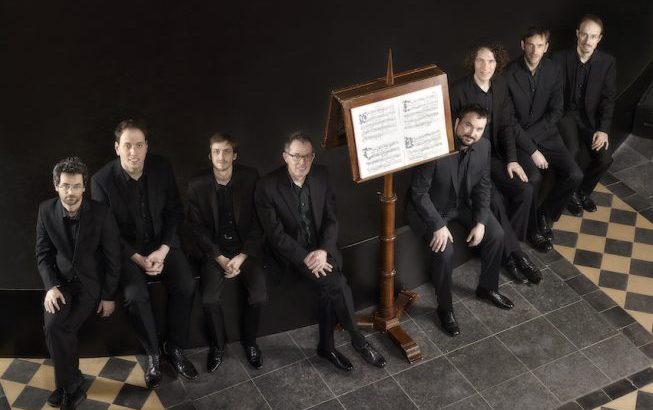Cappella Pratensis’s performance of Missa Maria zart was an excellent opportunity to experience Renaissance-style polyphony – which may sound foreign to our ears – live. Despite its significant differences from the music of today, the Dutch-based ensemble deftly showed that such music can be both accessible and enjoyable.
At over an hour long, Missa Maria zart is one of the longest, most complex Mass settings (compositions putting the text of the Catholic Mass to music) known. Running throughout the entire mass is the same underlying melody, known as a cantus firmus, and the entire piece is consequently known as a cantus firmus Mass. In the case of Missa Maria Zart, the cantus firmus is a German melody called Maria zart, or “Sweet Mary.” The performer’s comments during the pre-concert lecture, as well as the program notes, helped audience members to gain a greater understanding of the music and its complexities. Additionally, the text of the entire mass, as well as the English translations, were printed in the program, which allowed listeners to follow along. The Mass’s music was an experience in itself: in the echoey acoustics of St. Andrew’s Episcopal Church, the resonant harmonies and interplay of the voices rung throughout the space. Despite the piece’s extraordinary length, I found myself engaged throughout its entirety.
Outside of the music, I was impressed by several other aspects of Cappella Pratensis’s performance. For one thing, it is a physical feat to sing almost continuously, without water or an intermission, for over an hour. Secondly, it was fascinating how other (non-musical) types of art were incorporated into early music making, including Cappella Pratensis’s historically informed performance. I enjoyed the opportunity to look at their partbooks, both their modern reproduction of Missa Maria zart, and their facsimiles of original chant melodies, up close. It’s crazy that the musicians of Cappella Pratensis can read four parts from the markings on the page. Called mensural notation, it looks vaguely like modern musical notation, but it’s not obvious how to read it. Also, I enjoy doing calligraphy when I have spare time, and aesthetically, the partbooks were works of art. The beauty of the lettering and flourishes around the notation are very different from modern musical notation, in which the parts exist with the primary utilitarian purpose of readability. Even their sturdy music stand, which was constructed of solid wood, featured intricate carvings on its sides.
In conclusion, I am glad to have had the opportunity to experience Jacob Obrecht’s expansive Mass setting, Missa Maria zart, in live performance.


